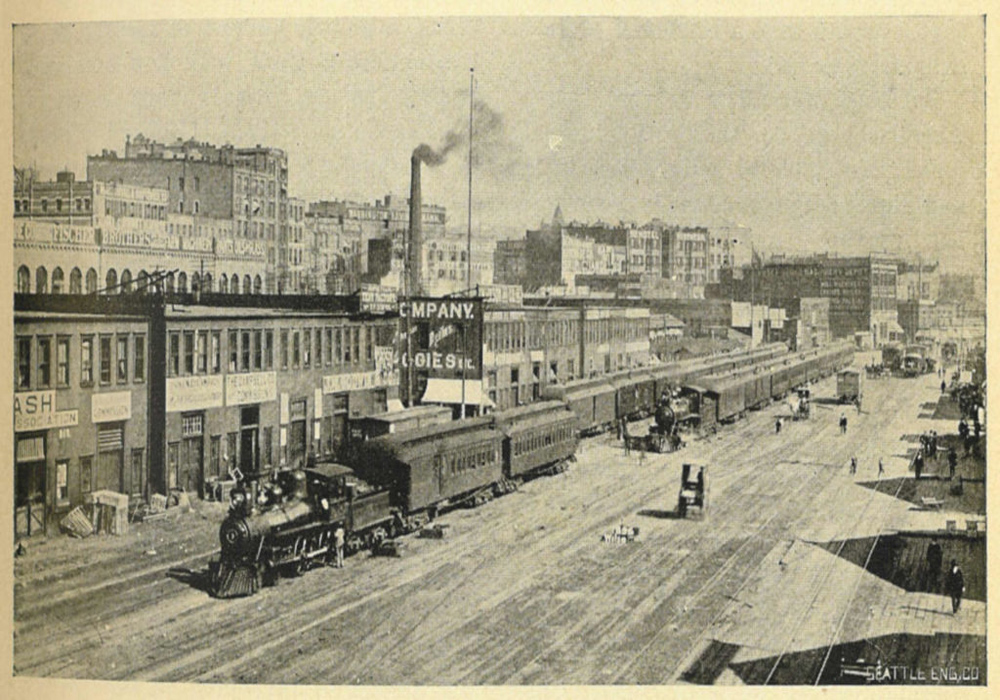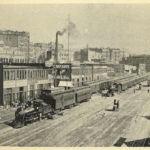
How was transportation affected by the industrial revolutionTransportation specialists agree that investments in transport infrastructure can generate massive developmental payoffs throughout society. The planet had gone through two industrial revolutions. The very first revolution started in the 1700s. And the second revolution happened in the 1860s. Each of the revolutions had been the most essential periods in the history of human society due to the fact they influenced virtually every aspect of life and especially brought the world totally new types of transportations. Steam engine, waterway, road, and railroad seasoned mostly improvement throughout the 1st revolution, and the second revolution brought the inventions of automobile and airplane both they played an essential role in the improvement of transportation in history.
The First Industrial Revolution merged into the Second Industrial Revolution about 1850, when technological and economic progress gained momentum with the improvement of steam-powered ships and railways, and later in the nineteenth century with the internal combustion engine and electrical energy generation The torrent of technological innovation and subsequent social transformation continued all through the twentieth century, contributing to further disruption of human life circumstances. These days, diverse parts of the world are at diverse stages in the industrial revolution with some of the nations most behind in terms of industrial development being in a position, through adopting the most recent technologies, to leapfrog over even some a lot more sophisticated countries that are now locked into the infrastructure of an earlier technologies.
The Industrial Revolution impacted the environment. The planet saw a main boost in population, which, along with an increase in living requirements, led to the depletion of all-natural resources. The use of chemicals and fuel in factories resulted in improved air and water pollution and an elevated use of fossil fuels. Coal burning caused elevated acid rain, which is a phenomenon that happens when pollutants are released into the atmosphere and then fall back to earth as precipitation.
Transportation And Communication, 1750 To The Present (Chapter 17)
how was transportation before the industrial revolutionRight after the war, trucks caught up to and passed the railroads as the primary conveyors of agricultural goods to markets and shoppers. The owners of the colliery had been impressed with Stephenson’s achievements and in 1819 he was provided the process of developing an eight mile railroad from Hetton to the River Wear at Sunderland Although he was functioning on this Stephenson became convinced that to be effective, steam railways had to be produced as level as feasible by civil engineering functions. The track was laid out in sections. The first component was worked by locomotives, this was followed by fixed engines and cables. After the railway reached 250 feet above sea level, the coal wagons travelled down over two miles of self-acting inclined plane. This was followed by yet another 2 miles of locomotive haulage. George Stephenson only utilised fixed engines and locomotives and had consequently developed the 1st ever railway that was completely independent of animal power.
The initial industrial revolution used water and steam to mechanize production, the second employed electric power to generate mass production and the third used electronics and information technologies to automate production. Right now a fourth industrial revolution is underway which builds upon the third revolution and the digital revolution that has been taking spot since the middle of the last century. This fourth revolution with exponential expansion is characterized by merging technology that blurs the lines amongst the physical, digital and biological spheres to entirely uproot industries all more than the planet. The extent and depth of these changes are a sign of transformations to whole production, management and governance systems.
In 1813 Stephenson became aware of attempts by William Hedley and Timothy Hackworth , at Wylam Colliery , to develop a locomotive. Stephenson successfully convinced his colliery manager, Nicholas Wood , his to permit him to try to create a steam-powered machine. By 1814 he had constructed a locomotive that could pull thirty tons up a hill at four mph. Stephenson named his locomotive, the Blutcher , and like other machines produced at this time, it had two vertical cylinders let into the boiler, from the pistons of which rods drove the gears.
Function Of Transportation In The Industrial Revolution how was transportation before the industrial revolution
how the industrial revolution affect transportationA Watt steam engine, the steam engine that propelled the Industrial Revolution in Britain and the world. In conclusion, throughout the very first and second industrial revolutions, transportation had gone by means of dramatic change and improvement. It not only brought efficient and efficient way of transporting, but also influenced and shaped people’s life, virtually every single aspect in people’s every day life. With the advance of technologies, transportation progressed. The steam engine led to the application of locomotive and steamboat, which elevated transporting capacity and hence facilitated far more production machines for manufacturing in other industries. Trade expansion was fostered by the introduction of canals, enhanced roads and railways. The invention of automobile grounded the fundamental way of transportation for folks whilst the airplane supplied a more quickly way from place to spot. The 1st and second industrial revolution marked a turning point in human history, and transportation played a vital function affecting people’s life socially and economically.
Railways developed in the 1st half of the nineteenth century and, right after a slow commence, boomed in two periods of railway mania. The industrial revolution was in a position to grow even far more, but several of the key adjustments had already begun without having rail. Abruptly the decrease classes in society could travel a lot further, a lot more very easily, and the regional variations in Britain started to break down.
The conveniences of city life designed a demand for other items, such as clothing and non-crucial products that improved the good quality of life. New technologies were invented to meet the growing demand for these goods, which lead to the 1st industrial factories. Soon, men and women have been moving into cities in higher numbers to discover employment as factory workers. This ushered in the subsequent fantastic revolution, recognized as the Industrial Revolution. In this lesson, you will take a look at how industrialization and mass production furthered progress, and how they have impacted our atmosphere.
Australia And The Industrial Revolution Effect Of The Very first Railways Inside The Collection
how did transportation affect the industrial revolution quizletTransportation led to a decrease of production charges for firms. Iron founding—In the Iron market, coke was finally applied to all stages of iron smelting, replacing charcoal This had been achieved a lot earlier for lead and copper as well as for making pig iron in a blast furnace, but the second stage in the production of bar iron depended on the use of potting and stamping (for which a patent expired in 1786) or puddling (patented by Henry Cort in 1783 and 1784).
The transportation revolution developed the speedy growth of towns and cities. In 1820, six.1 % of Americans lived in places with populations of greater than 2,500 individuals, and only New York City and Philadelphia had much more than one hundred,000 individuals. By 1860, nonetheless, nearly 20 percent of the population lived in places of two,500 or a lot more, and New York City’s population had climbed from 124,000 to 800,000. The West skilled dramatic changes as effectively. Just before 1830, all of the key cities in the West have been on major rivers. Nevertheless, the canal system heightened the value of lake cities such as Buffalo, Cleveland, Detroit, and Chicago. Between 1830 and 1840, the portion of westerners living along rivers dropped from 75 to 20 %.
Szostak, Rick. The Function of Transportation in the Industrial Revolution: A Comparison of England and France. McGill-Queens University Press, 1991. The improvement of the stationary steam engine was an important early advance of the Industrial Revolution however, for most of the period of the Industrial Revolution, the majority of industries still relied on wind and water energy as well as horse and man-power for driving modest machines.




